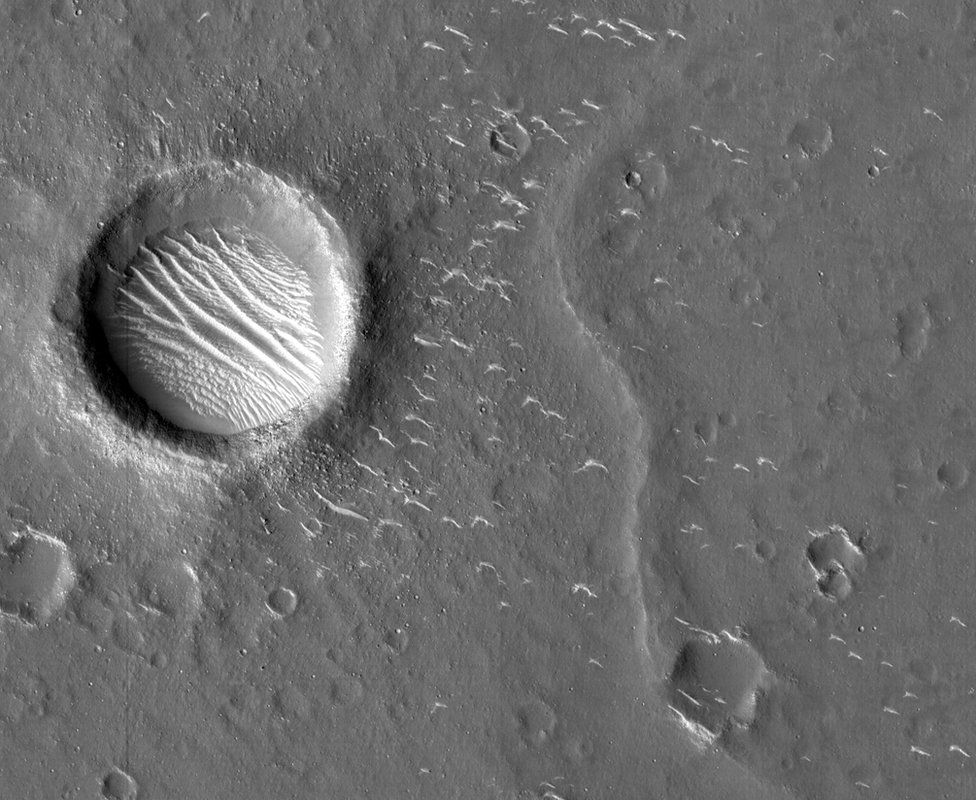
China says it will attempt to land its Mars rover in the coming days.
The six-wheeled Zhurong robot will target Utopia Planitia, a vast terrain in the planet's northern hemisphere.
The vehicle will use a combination of a protective capsule, a parachute and a rocket platform to make the descent.
A successful touchdown would be a remarkable achievement given the difficult nature of the task. Only the Americans have really mastered landing on Mars.
China's National Space Administration (CNSA) says the attempt will occur sometime "from the early morning of 15 May to 19 May, Beijing time".

But amateur radio enthusiasts who've been tracking mission signals expect the attempt to come right at the beginning of this window. In other words, late Friday GMT.
Zhurong was carried to Mars on the Tianwen-1 orbiter, which arrived above the planet in February.
The time since has been spent surveying Utopia, taking high-resolution images to pinpoint the safest place to put down.
The aim with all such ventures is to pick a spot, as far as possible, that is devoid of imposing craters and large boulders.

Whenever the attempt is made, Chinese engineers will have to follow events after the fact.
The current distance to Mars is 320 million km, which means radio messages take almost 18 minutes to reach Earth.
Every stage of the Zhurong's approach to the surface therefore has to be managed autonomously.
The entry (into the atmosphere), descent and landing strategy follows a familiar architecture.
At the chosen moment, the rover, encased in an aeroshell, will be released from the Tianwen orbiter and dive downwards.

A heatshield on the capsule will slow the fall by pushing up against the Martian air. A parachute will then open to reduce the velocity still further. Finally, the robot will break away on a rocket-powered bench for the manoeuvres that take it to the ground.
It is a daunting challenge, but China has shown great competence of late in its space endeavours, which have included putting two rovers on the Moon.
If Zhurong does get down successfully, scientists will try to get at least 90 Martian days of service out of it, studying the local geology. A day, or Sol, on Mars lasts 24 hours and 39 minutes.
The robot looks a lot like the American space agency's (Nasa) Spirit and Opportunity vehicles from the 2000s. It weighs some 240kg and is powered by fold-out solar panels.
A tall mast carries cameras to take pictures and aid navigation; five additional instruments will help assess the mineralogy of local rocks and look for any water-ice below ground.
https://news.google.com/__i/rss/rd/articles/CBMiNWh0dHBzOi8vd3d3LmJiYy5jb20vbmV3cy9zY2llbmNlLWVudmlyb25tZW50LTU3MTIyOTE00gE5aHR0cHM6Ly93d3cuYmJjLmNvbS9uZXdzL3NjaWVuY2UtZW52aXJvbm1lbnQtNTcxMjI5MTQuYW1w?oc=5
2021-05-14 17:05:11Z
52781593431690
Tidak ada komentar:
Posting Komentar